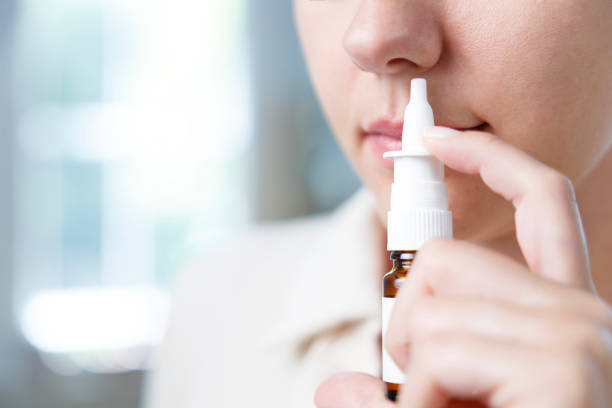USP Next Generation Impactor Testing
The USP Next Generation Impactor (NGI) testing method is a critical tool in pharmaceutical product development and quality assurance, particularly for inhalation and nasal products. This advanced technique allows for the precise quantification of drug delivery systems by measuring the distribution of active ingredients across various lung segments.
USP NGI testing ensures that inhalation and nasal products meet stringent USP standards, which are recognized worldwide for their scientific rigor and reliability. By utilizing this method, pharmaceutical companies can guarantee consistent product performance, ensuring efficacy and safety in patient use.
The NGI system consists of a series of impactors designed to simulate the anatomy of the human respiratory tract. Each impactor captures particles at different lung regions, providing detailed information on where the drug is deposited within the body. This data is essential for optimizing drug delivery systems and ensuring that the correct dosage reaches the intended target.
Compliance with USP NGI testing requires meticulous preparation of specimens, including accurate sampling and handling procedures to prevent contamination or degradation. The method involves collecting aerosols generated from inhalation devices under controlled conditions. These aerosols are then directed through a cascade of impactors, each designed to capture particles within specific size ranges.
The collected samples undergo detailed analysis using advanced analytical techniques such as laser diffraction and scanning electron microscopy (SEM). This allows for the precise measurement of particle size distribution and morphology, critical factors in determining drug efficacy. The results provide valuable insights into how the product performs under real-world conditions, helping manufacturers refine their formulations.
USP NGI testing is particularly important for ensuring that inhalation products deliver the correct dose to the appropriate lung regions. This method helps identify any potential issues with particle size or distribution that could affect drug performance. By leveraging this advanced technology, pharmaceutical companies can enhance product quality and meet regulatory requirements.
In addition to its role in development and compliance, USP NGI testing is also vital for research and innovation. It enables scientists to explore new drug delivery strategies and optimize existing formulations. The method’s ability to provide detailed insights into particle behavior makes it an invaluable tool for advancing the field of respiratory medicine.
Pharmaceutical companies that adopt USP NGI testing gain a competitive edge by ensuring high-quality products that meet global standards. This service is particularly beneficial for firms focused on developing novel inhalation and nasal products, as it provides robust data to support clinical trials and regulatory submissions.
Scope and Methodology
The USP Next Generation Impactor testing method encompasses a comprehensive approach to evaluating the delivery of aerosolized drugs. The primary scope includes assessing particle size distribution, deposition patterns within the respiratory tract, and overall efficacy of inhalation products.
- Particle Size Distribution: The NGI system captures particles across various sizes, ranging from submicron to larger microparticles. This provides a detailed profile of how different particle sizes contribute to drug delivery.
- Deposition Patterns: By simulating the human respiratory tract, the impactors capture particles at multiple lung segments, offering insights into where the drug is most effectively deposited.
- Efficacy Evaluation: The method evaluates how well the inhalation product delivers its intended dose to the target areas of the respiratory system.
The testing process begins with the preparation of the aerosol sample, which involves generating a reproducible spray using the inhaler device. The spray is then directed through a series of impactors, each equipped with a filter that captures particles within specific size ranges. After collection, the filters are analyzed using advanced analytical techniques to determine particle size distribution and deposition patterns.
Compliance with USP standards ensures that the testing method adheres to rigorous quality control measures. This includes precise calibration of impactors and regular maintenance to ensure consistent results. The method also requires strict adherence to sampling protocols to prevent contamination or degradation of the sample.
International Acceptance and Recognition
- The USP Next Generation Impactor testing method is widely recognized by international organizations such as the World Health Organization (WHO) and the European Medicines Agency (EMA).
- It is also accepted in various countries around the world, including the United States, Canada, Australia, and numerous countries in Europe.
Competitive Advantage and Market Impact
Adopting USP Next Generation Impactor testing provides pharmaceutical companies with a significant competitive advantage. By ensuring high-quality products that meet global standards, firms can enhance their reputation in the market and gain trust from regulatory bodies.
This method is particularly advantageous for companies focused on developing novel inhalation and nasal products. It allows them to explore new drug delivery strategies and optimize existing formulations, leading to innovative solutions that improve patient outcomes.
The ability to provide robust data through USP NGI testing supports successful clinical trials and regulatory submissions, opening doors to broader market access. This ensures that companies can stay ahead of the competition by delivering superior products that meet stringent quality standards.





